
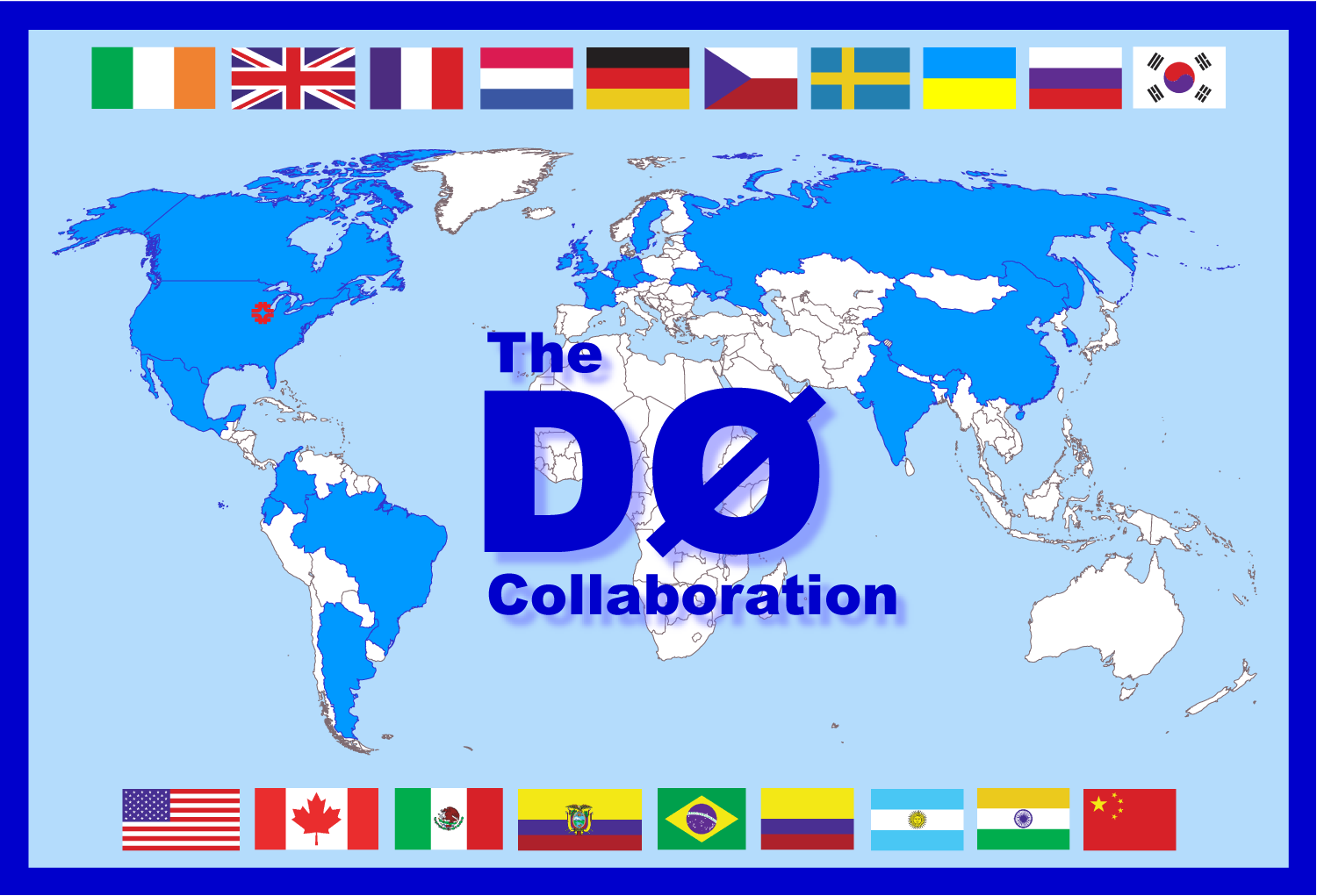
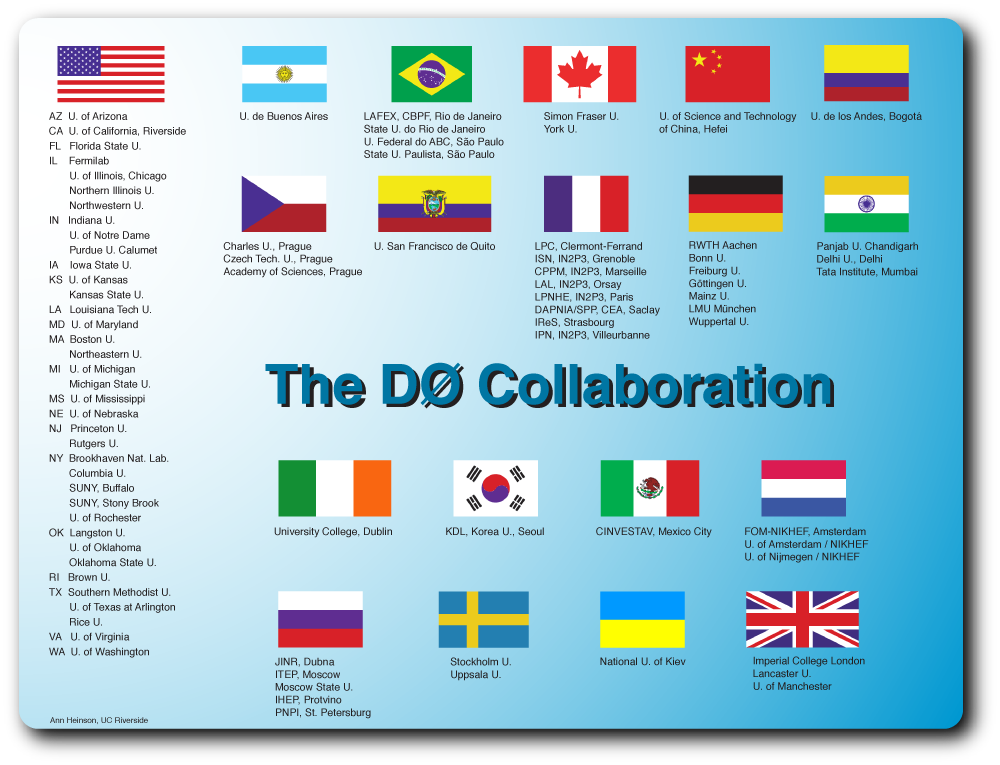
Two thousand years ago natural philospophers conjectured that the underlying structures of our Universe were symmetric, such as circles or spheres. We now know that a perfectly symmetric Universe would be lifeless and that it is the asymmetries in Nature which define its history and our existence. One of the most critical asymmetries is the difference between matter and antimatter which occurred in the first instance after creation.
Our Universe began about 13 billion years ago in a state of very high temperature and density, the so-called Big Bang. Since that time the Universe has expanded and cooled, as seen in the Figure. During times before a trillionth of a second, the temperature was high enough so that matter-antimatter pairs could be formed. But at this time, in a Universe which up to then had equal parts matter and antimatter, matter somehow began to dominate. A very tiny amount of matter, a fraction of less then 1 in a billion, survived to form all the stars, all the planets, and all of us. Without this asymmetry, we would not exist.

For over fifty years experiments at particle physics centers such as Fermilab have tried to study particle-antiparticle differences and explain the formation of matter in the early Universe (particle physics introduction) . Recently, a paper has been submitted by the Dzero experiment at Fermilab which may lead to a better understanding of the physics processes which caused this asymmetry.
The impact of particle-antiparticle differences, called CP violation or simply CPV, on the early Universe was described in the 1960's by Andrei Sakharov, who later won the Nobel peace prize for his dissent against the Soviet Union. During that same decade, CPV was observed in the decay of neutral kaons by Jim Cronin and Val Fitch. These kaons are mesons made from either a strange quark and a down antiquark or a strange antiquark and a down quark. They live long enough so that they can turn into each other, as a particle transforms into an antiparticle. This also happens for neutral B mesons, the B_sub_d (d quark, b antiquark) and B_sub_s (s quark, b antiquark). The Figure below shows an anti-B_sub_s turning into a B_sub_s, and can occur through the changing of quarks of one generation to another generation, called mixing. Makoto Kobayashi and Toshihide Maskawa showed in the 1960s how mixing could be slightly different for quarks and antiquarks, and so explain CPV if there were at least three generations of quarks. Their model of mixing did explain what has been observed in kaon and B_sub_d decays but is about 10 times too small to explain the preponderence of matter in the Universe. Cronin, Fitch, Kobayashi, and Maskawa all received the Nobel prize in physics for their studies of CP violation.
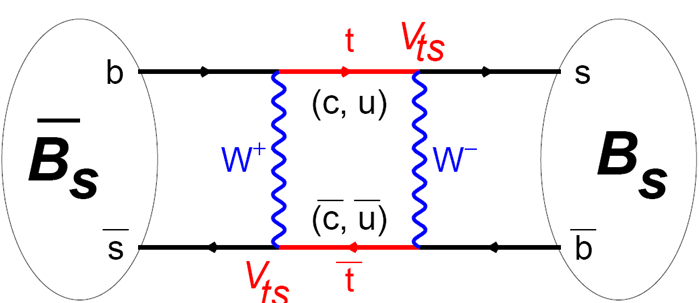
The DZero detector is shown in the Figures. It is located on the opposite side of the Fermilab ring from the main building. Protons and antiprotons collide in the center of the detector and those collisions which produce two muons with the same charge are tabulated. Muons travel outward from the collisions and have their charge and energy measured in the central tracking system which is inside a superconducting solenoidal magnet. They then travel through the calorimeter and into the muon detection system which includes toroidal magnets (seen in blue and red in the photo with the yellow being the coils which carry the current which produces the magnetic field in the iron) which gives a second measurement of the muon charge and momentum. Muons are the only charged particle which can travel through so much material.
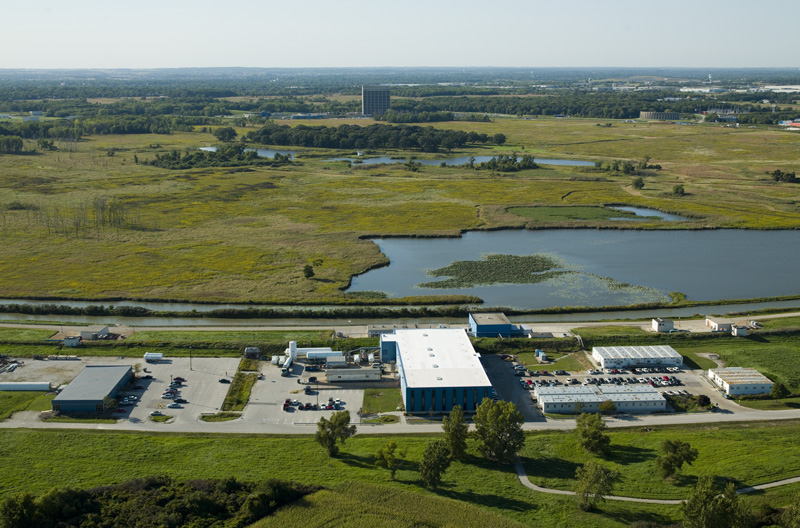

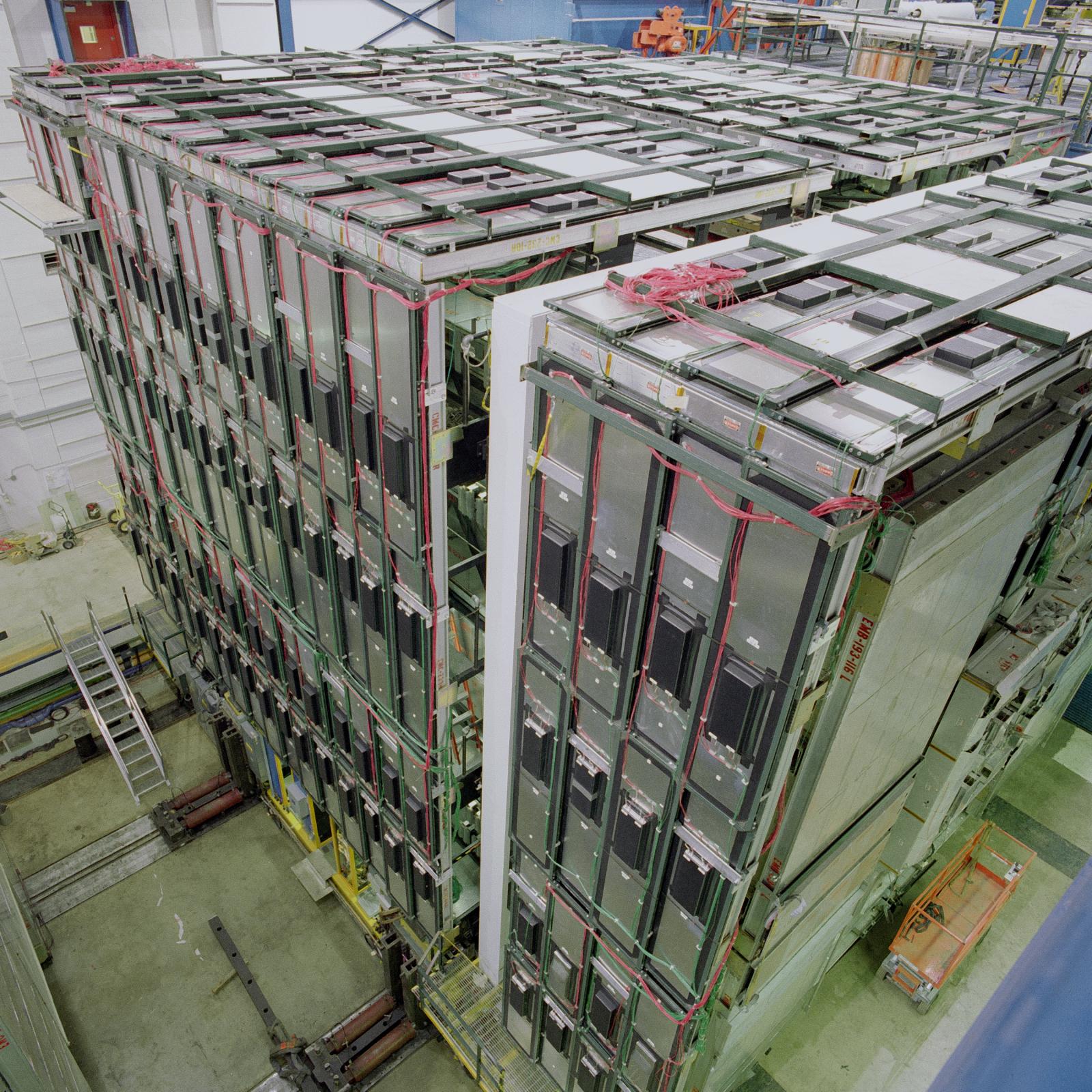
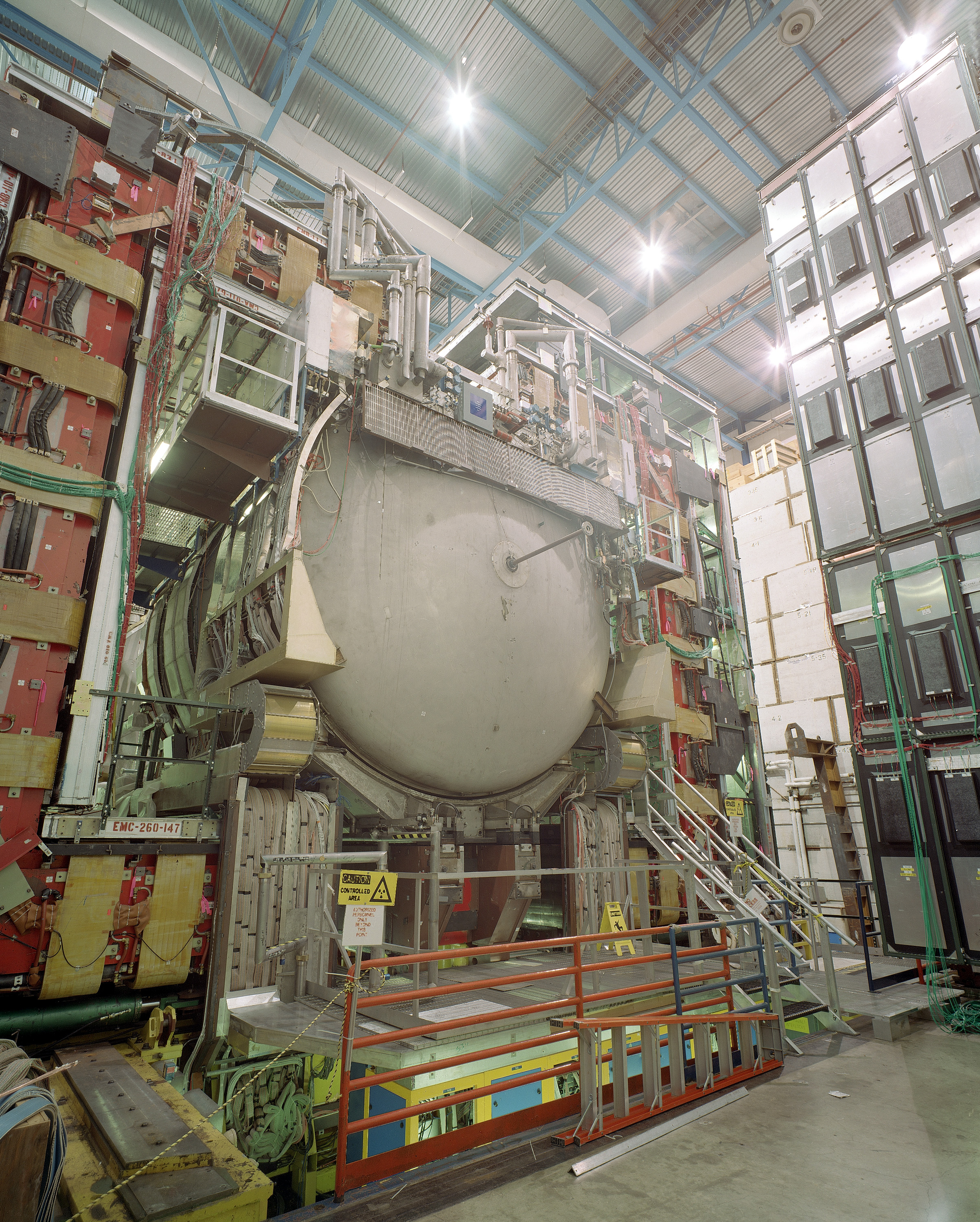
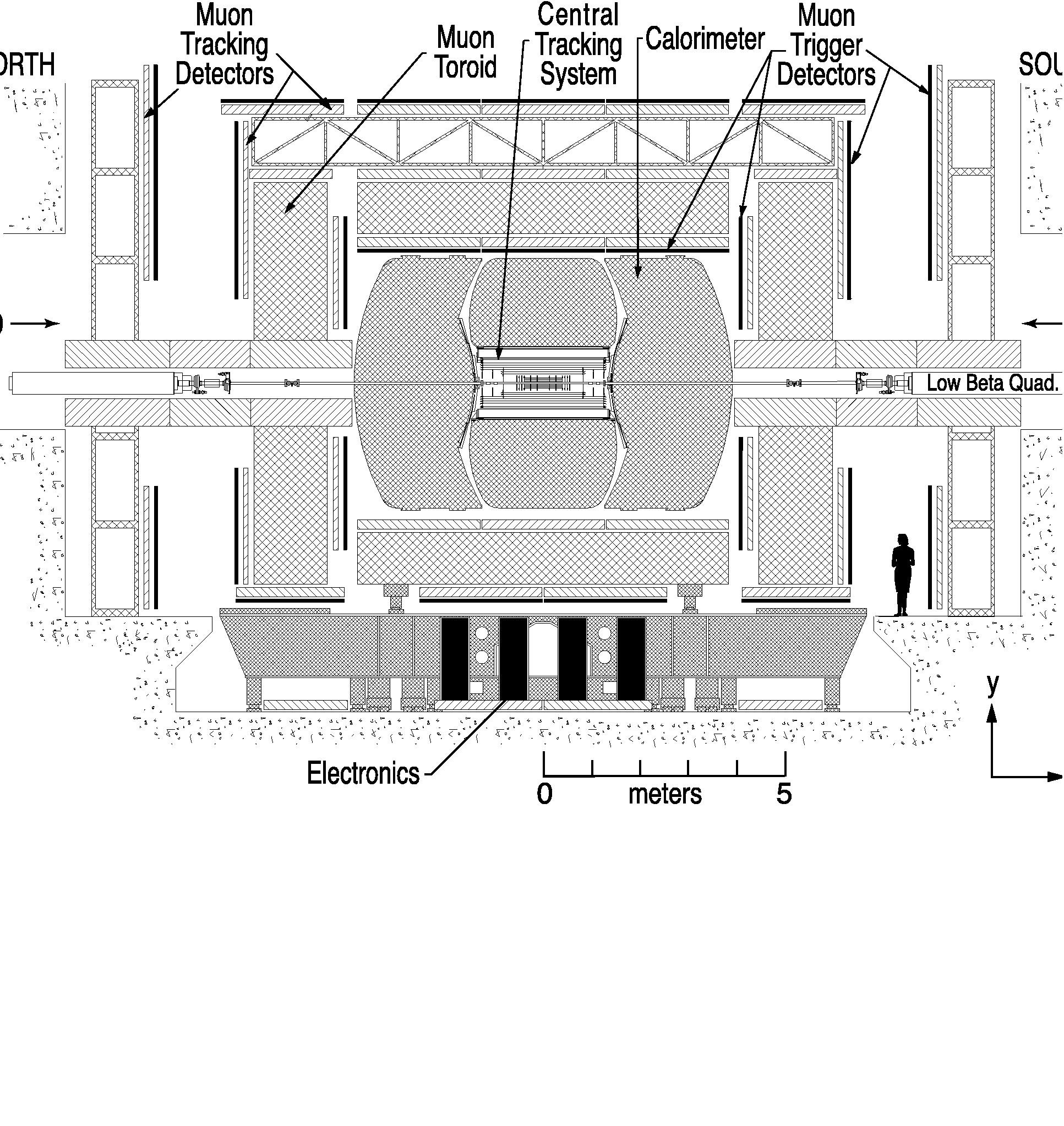
From 2002 to 2009, DZero collected data and found that out of over 200 trillion proton-antiproton collisions 4 million were selected which contain two muons which had identical charge. We then looked at how many of these were both positively charged and how many were both negatively charged. If the number of these is different, that is an indication of a matter-antimatter difference. The primary way to produce these "like-sign" dimuons is if they come from the decay of neutral B mesons which transform from a particle to an antiparticle (or vice-versa) before decaying.
The measured results need to be corrected for detector effects and backgrounds. Positively and negatively charged muons are bent in opposite directions by DZero's two magnetic systems. Some small fraction of the over 1 million channels of the detector are inoperative at any one time which could lead to charge asymmetries due to the detector geometry. These are minimized by changing the magnet polarities every few weeks causing the effect seen in the next Figure.
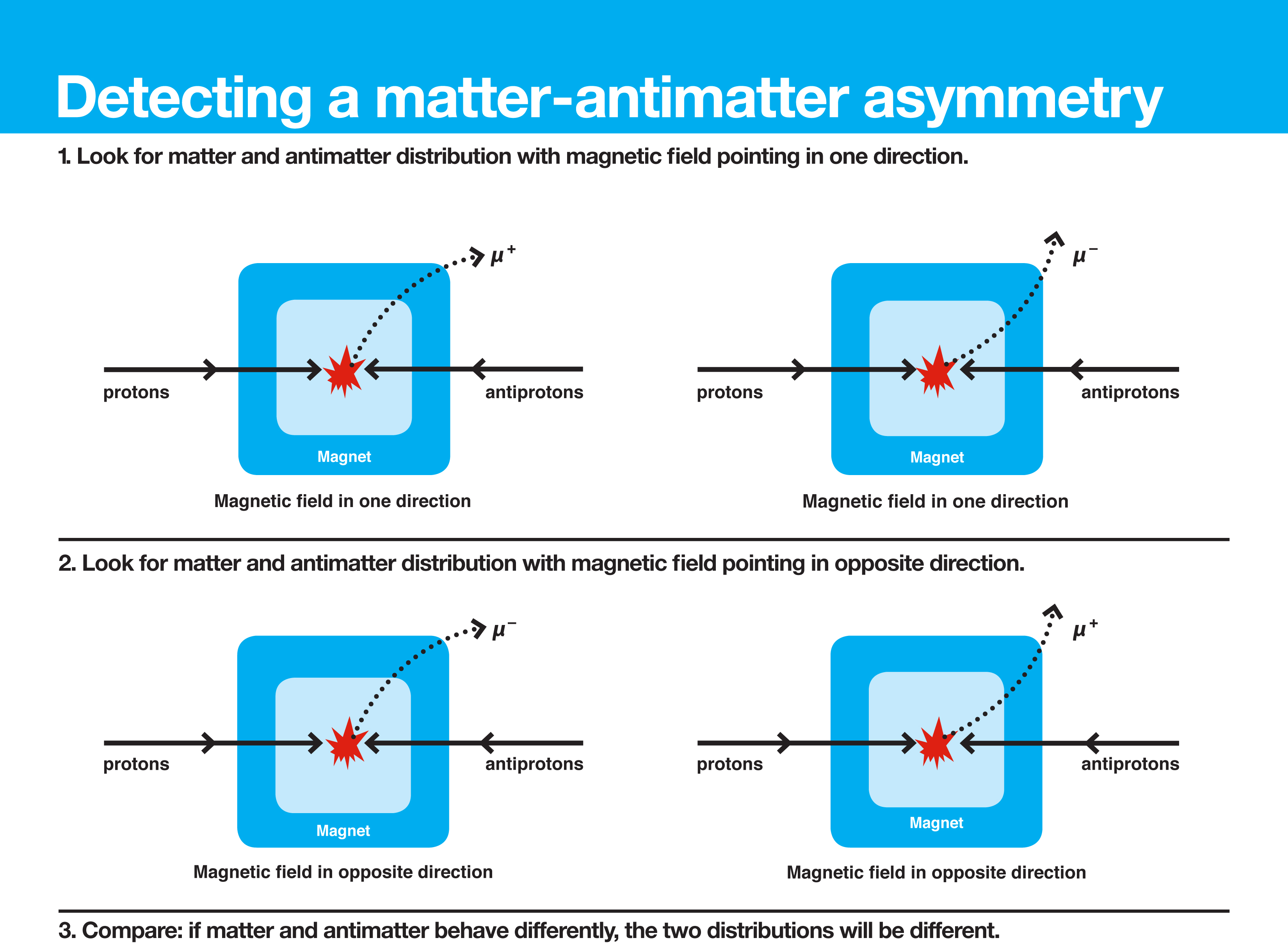
After all corrections, there is a net excess in the fraction of those collisions with two muons where both are negatively charged compared to those where both are positively charged. The effect is small, 0.00957 or a little bit less then 1% of the 4 million collisions with like-sign dimuon. But the prediction from previous CPV experiments and theory, which is called the Standard Model, is 0.00023. The Figure shows the DZero result as the blue band while the prediction of the Standard Model is the black point near 0. DZero's result is over three standard deviations away from the Standard Model.
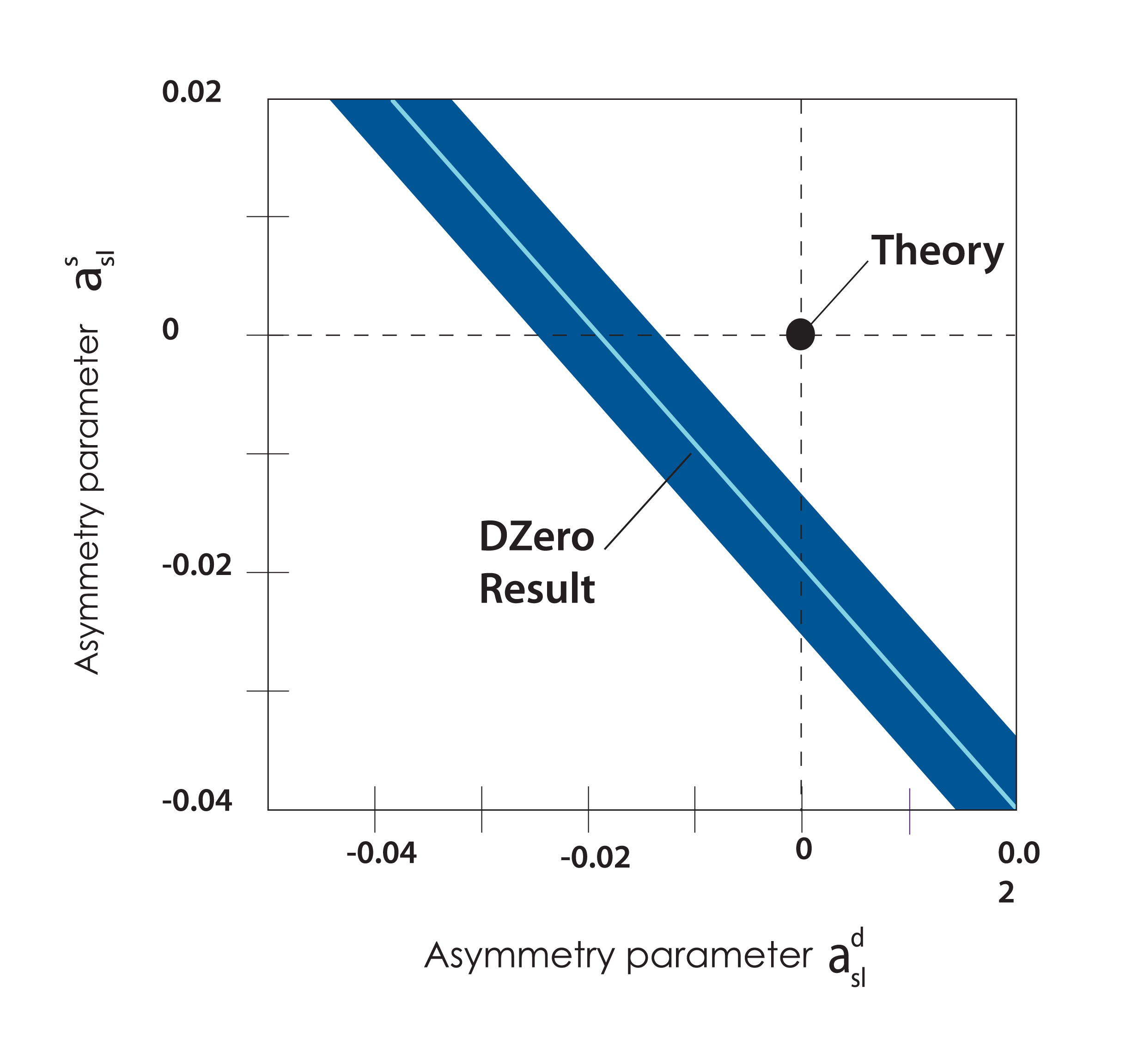
If the excess holds up, this result from DZero is the first evidence of anomalous CP-violation in the mixing of neutral B mesons. It could point to new physics, such as a new type of massive particles, that could explain the excess of matter in the early Universe.
The analysis of this data was primarily done over the past seven years by two DZero colleagues, Bruce Hoeneisen from Universidad San Francisco de Quito, Ecuador, and Guennadi Borisov from Lancaster University in the UK. But to design, construct and operate the detector takes the dedicated work of a collaboration of almost 500 physicists. This section highlights NIU contributions to this result
NIU BOT Professor Dave Hedin played a signifcant role in the design and construction of the muon system plus has led the group responsible for the software algorithms used to define muons for sixteen of the past twenty-five years. Between 1987 and 2001, over 90 NIU students worked on building and testing components of the DZero muon system. The photo of the DZero muon group while the detector was under construction in 1990 includes 11 from NIU.
NIU also made significant contributions to the muon trigger system. There are about 5 million proton-antiproton collisions each second but the detector information from only about 100 of these are saved for further analysis. The thousands of logic circuits which decide which to save is collectively called the trigger. NIU Distinguished Research Professor Jerry Blazey led the group which designed and built the DZero trigger system while Hedin was responsible for modifications made to the muon system in the 1990s which optimized its ability to trigger on B meson decays. In addition, NIU faculty Mike Fortner and research scientist Sergey Uzunyan built a component of the muon trigger system. Optimizing the trigger and maximizing the data collection efficiency were two of Blazey's highest priorities while he was co-spokesperson of DZero from 2002 to 2006. DZero now operates with an efficiency greater then 90%, which helped to provide the large sample of data used for the dimuon result.
Finally, more as a footnote, Hedin was one of the original leaders of DZero's B physics group and did some preliminary studies of this channel which was listed as one of the experiment's physics goals in reports written in the 1980s. When he discussed measuring the dimuon charge asymmetry at a Fermilab Director's review of DZero in 1987, it seemed unattainable, a far-fetched idea given the detector's and collider's capabilities. Hedin then worked with Hoeneisen on the analysis of data collected during the 1992-1996 period. This sample contained less then 2000 like-sign muon pairs and, while its results were never published, the analysis was the first step in understanding the signal from B decays and its critical backgrounds.
For futher information contact Prof. David Hedin, Northern Illinois University, email: hedin@niu.edu
Last modified: July 12, 2010